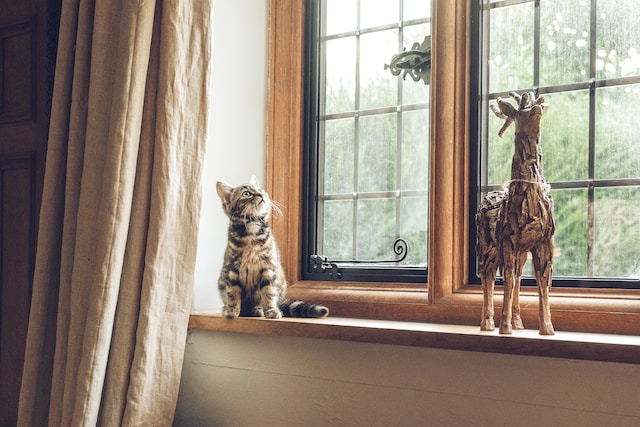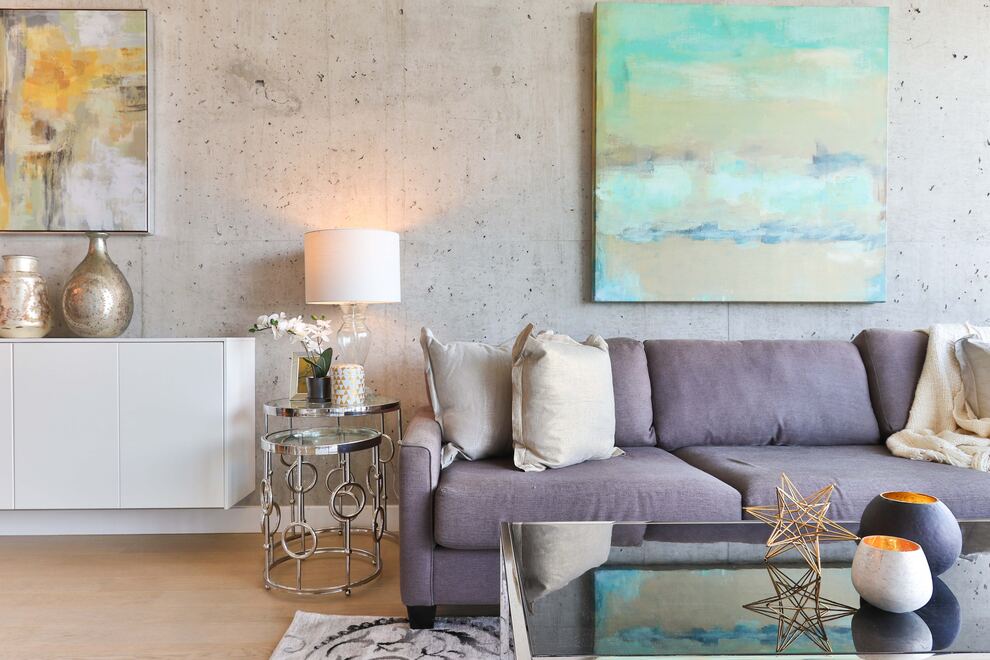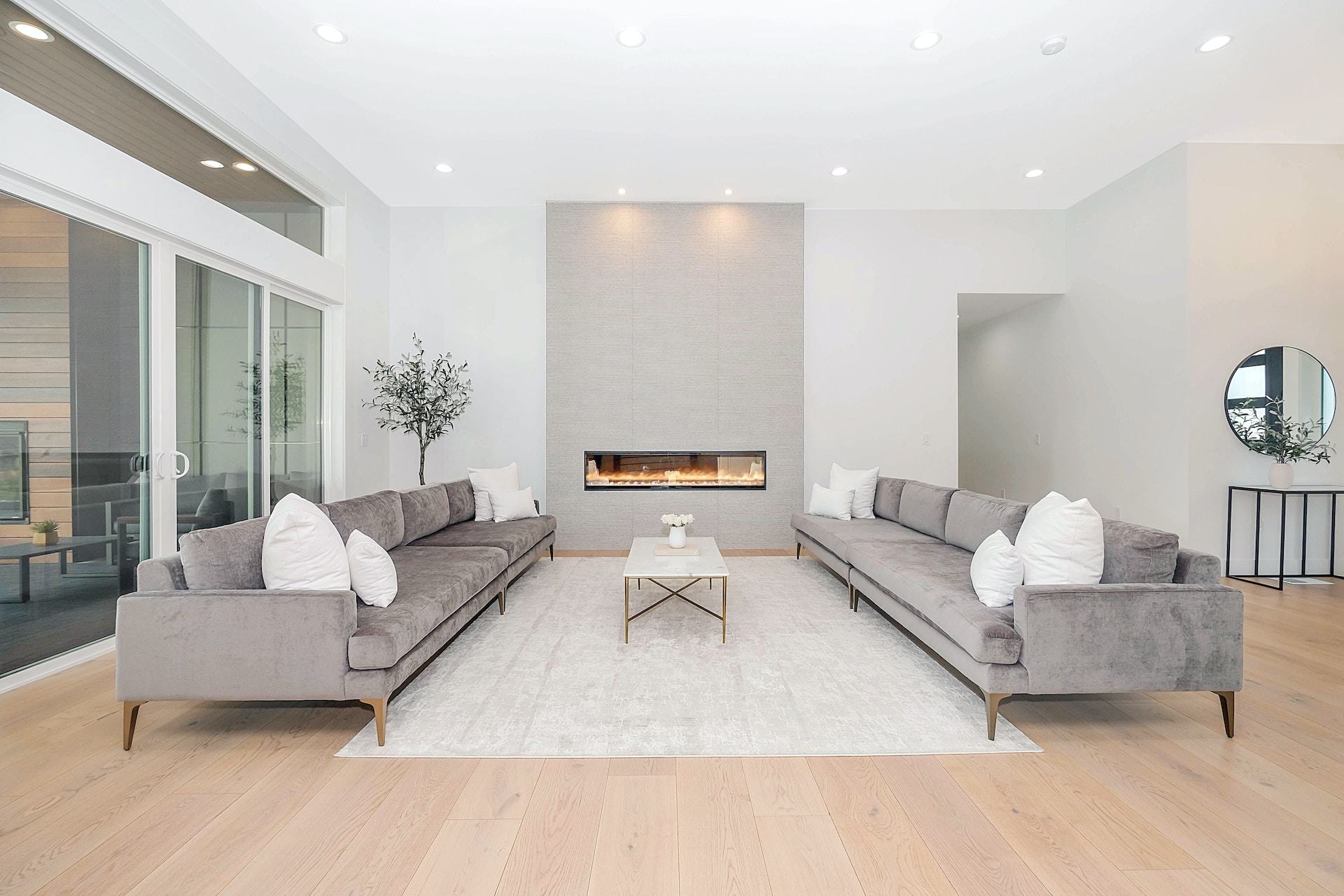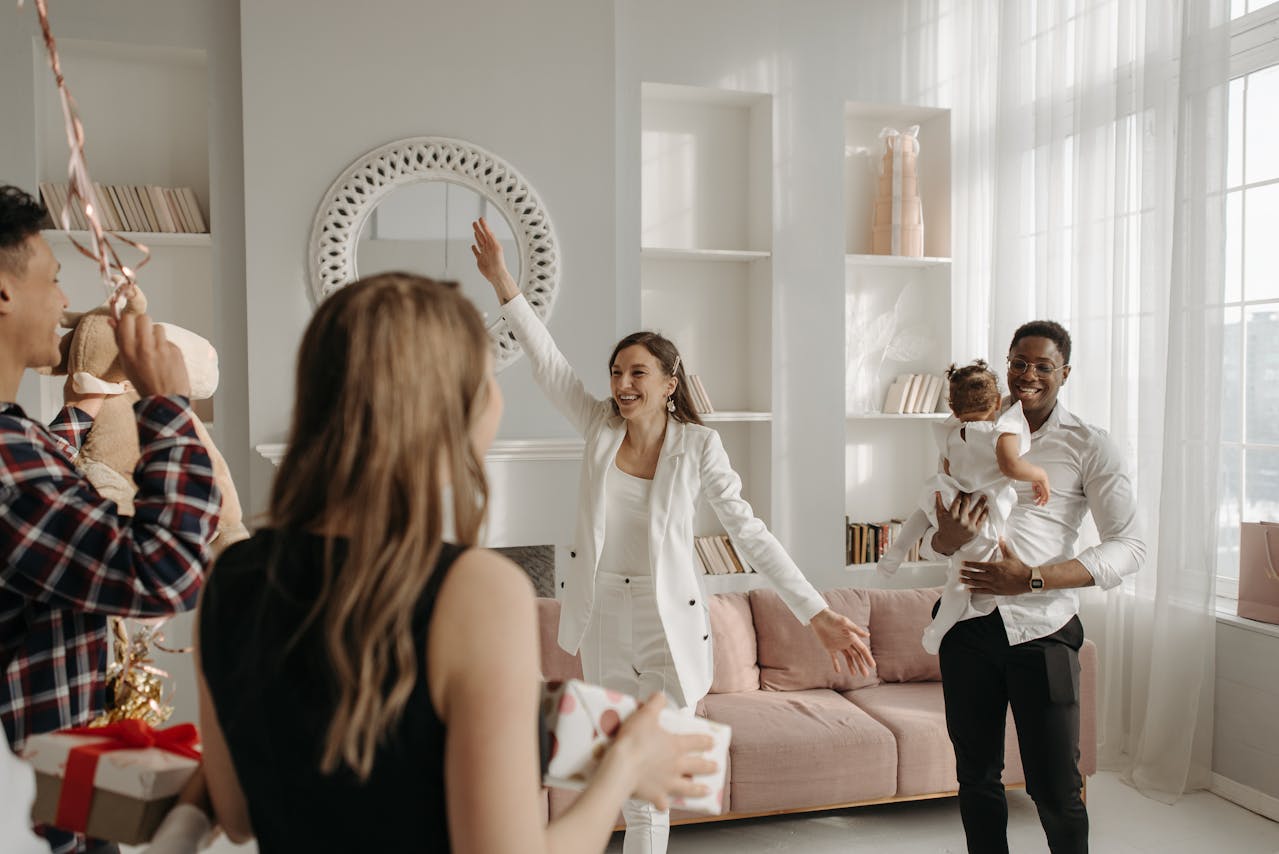Pets are an important part of many families, so creating a home with a pet-friendly interior design is crucial to their safety and happiness. While every homeowner wants a fantastic living space for themselves, it’s also essential to create a harmonious living space for your furry family members. According to some recent statistics, approximately 66 percent of American households, or 86.9 million homes, own at least one pet.
When you’re working on a pet-friendly interior design, there are a few key things to consider, including the type of furniture and flooring you choose, safety considerations, and the decor you use. It’s also vital to ensure you have the right home insurance to protect your pets and your home’s new design plan. Read on to learn more about how you can incorporate your beloved pets into your home design plan to ensure that everyone lives a happy, safe, and comfortable life.
Start by understanding your pet’s unique needs
Since every pet is different, make sure that you understand your pet’s behavior and unique preferences when it comes to living in your home. These considerations will enhance your pet’s well-being while reducing the risk of accidents and injuries. Here are some key everyday pet needs to consider when you’re creating a pet-friendly interior design plan:
- Space: Consider how much space your pet will need to be comfortable, including areas for eating, relaxing, and sleeping. If your home is small, you may need to designate one part of a room just for your pet. For those with larger homes, consider giving your pet an entire room of their own. Outdoor space is also vital to the health and happiness of many pets. If you don’t have an enclosed backyard, you may need to adjust your lifestyle to ensure your pet gets adequate exercise, like taking them for a walk or spending time at a nearby dog park.
- Comfort: All pets need a quiet place of their own to nap and rest. Adding a soft bed in a quiet area is one way to encourage comfort and safety for your furry friends. Some pets may prefer to sleep in a crate. A cozy nook under a staircase with a comfy bed and some toys is a great way to incorporate a pet-friendly design into your home.
- Safety: Keeping your pets (and others) safe should always be your number-one priority. Make sure your pets are contained whenever you have visitors that they don’t know. Always ensure your backyard is adequately gated so your pets can’t escape. You may also want to consider getting pet insurance, which will protect against any unexpected incidents and help to cover the cost of medical treatments if your pet gets sick or injured.
Pet-friendly interior design: choosing furniture and fabrics
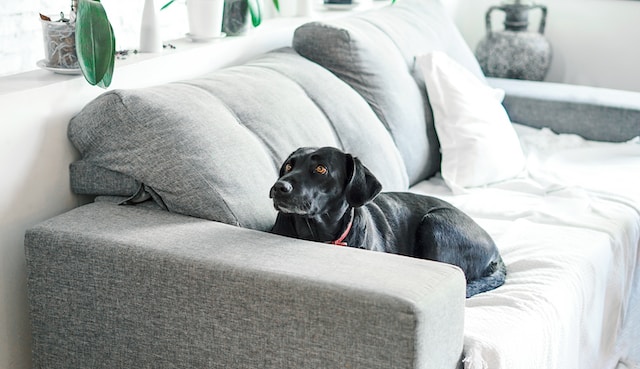
If you’re a pet parent, you know your pets can wreak havoc on your furniture. Make sure you choose pet-friendly furniture that won’t rip, tear, or scratch easily. Upholstery materials like velvet attract pet hair, but leather is highly durable, scratch-resistant comfortable, and luxurious. You can also add a slipcover to your favorite pieces of furniture that you can easily remove and toss in the washing machine for a quick cleaning.
The key is to look for furniture and materials that are durable and easy to clean so that you’re getting the most out of your investment. If possible, bring a few fabric samples home and use them to pet your cat or dog, then see which one does the best job of resisting fur before you purchase new furniture.
Look for furniture that not only complements your home decor, but that also accommodates your pet. Some dog crates can easily double as a coffee table, side table, or TV stand. Pick something in the same finish as the rest of your furniture for a cohesive look. Add an attractive cat tree to your living room so your feline friends will scratch it rather than tear up your brand-new sofa. Instead of leaving an open litter box on the floor, choose an enclosed litter box with a cover to keep unsightly messes hidden.
Opting for more pet-friendly furniture not only helps it to last longer, but it can also impact your home insurance policy. Some home insurance companies don’t cover pet-related damage. That means if your favorite couch gets torn up by your pet, it won’t be covered under your plan. Getting the best possible furniture that resists typical pet-caused damage will help you protect your hard-earned money and keep your furniture looking beautiful for as long as possible.
Flooring solutions for a pet-friendly interior design
When you have pets at home, maintaining clean floors can be a challenge. Not only do pets leave tufts of fur and hair behind, but their sharp claws can create dings, gouges, and scratches. Fortunately, there are some excellent pet-friendly flooring options available. Here are some examples as well as ways you can maintain and protect your floors from pet-related damage.
- Hardwood: Solid hardwood is a timeless, attractive flooring choice, and it can last for many years. However, if you have pets, this flooring might not suit you since it is very vulnerable to scratches. If you adore the look of natural hardwood, choose engineered hardwood flooring instead. Not only does it have the same look, but it’s much more durable and easier to maintain. Vacuum the floors regularly to remove fur, and gently mop your floors weekly to keep them beautiful. Choose rustic engineered hardwood flooring to hide any dings, dents, or scratches people and pets might cause.
- Laminate: This affordable flooring is easy to clean, and it’s a great pet-friendly choice. Not only is laminate tough and durable, but it’s also very scratch-resistant. Look for water-resistant laminate that won’t leave stains on your flooring. Since laminate can be slippery, add some area rugs to protect your pets and family. Carefully mop your laminate floors monthly using a floor cleaner specially formulated for laminate. Always wipe up spills immediately so your floors don’t stain, and dry mop the floors regularly to remove pet dander, crumbs, and debris.
- Vinyl: Vinyl flooring is affordable, waterproof, and mark-resistant. Choose vinyl plank flooring that mimics the look of wood or natural stone to help hide the occasional scratch. This flooring is effortless to clean and provides an excellent, comfortable surface for dogs and cats to rest on. Just like laminate, vinyl can be cleaned by the occasional dry and wet mopping, as long as you’re using products formulated to clean vinyl floors to help maintain the finish.
Creative pet-friendly interior design storage and organization tips
Part of having a pet-friendly home is making sure that you have enough storage for all of your pet’s food, toys, and accessories. Not only will the right storage help your home look clean and organized, but it’s also an excellent way to keep your space safe. When you have proper storage, it can help to reduce the risk of accidents that may impact your home insurance. Fewer accidents mean fewer home insurance claims, and it also helps to keep your premiums low. Here are some tips to help you integrate pet storage into your overall modern home decor and design.
- Create a pet storage station in your laundry room with a few cabinets and cubbies. You can use this space to store leashes, extra toys, bags or cans of food, and cat litter. Install some wall hooks by the door so it’s easy to grab your dog’s leash and go before you head to the dog park.
- Instead of leaving your dog’s dry food out on the counters, add a space for hidden storage in your lower kitchen cabinets. A pull-out drawer with a plastic airtight bin and a scoop is a great place to keep dry dog food hidden out of sight.
- Integrate your dog’s bed into your furniture by adding it to the inside of a pull-down cabinet. You can also create a comfy, cozy dog nook underneath your staircase. Both options ensure that your pet has a comfortable, safe place to sleep without getting in the way.
- Designate a space in your home to be the pet-feeding station. Add a waterproof, slip-resistant mat to the floor and place the food and water bowl on top to protect the flooring from spills, claw marks, and crumbs. Keep pet food nearby in a canister or a few bins with clear labels so it’s easy to find and identify what you need during feeding time.
Decor and accessories for a pet-friendly interior design
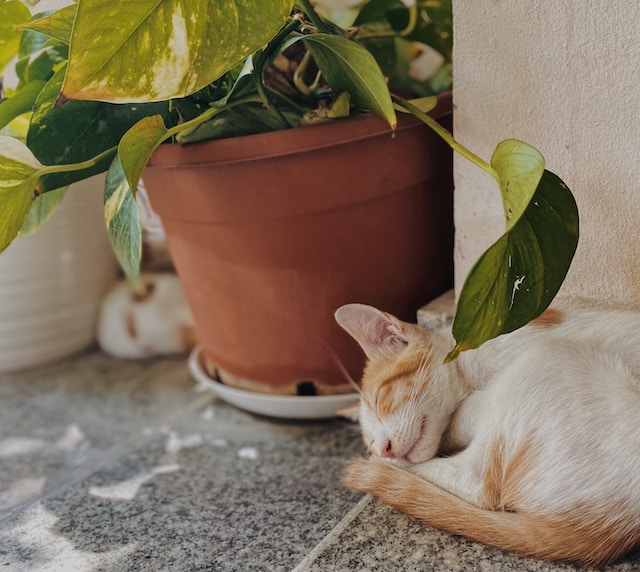
It’s important to create the home you want, but it’s also important to choose accessories and decor that are safe for your pets. Here are some examples of pet-safe plants and decorative elements, as well as tips to help you incorporate pet-themed decor to enhance your home’s overall design. These options may also reduce the risk of damage, which can impact your home insurance.
- Pet-safe plants: If you have a green thumb, always choose plants that are safe and non-toxic to pets. According to experts, bamboo, spider plants, and herbs like rosemary, basil, and cilantro are great pet-friendly options. Some examples of popular plants that are toxic to cats and dogs include lilies, pothos, African violet, and sago palm. When in doubt, refer to a trusted resource like the ASPCA so you know which toxic plants to avoid.
- Non-toxic decor elements: Avoid fabric and upholstery that have been treated with flame retardant chemicals, as these can cause serious health problems in not just pets but also people. Choose organic cotton, linen, or other all-natural materials instead whenever possible. Don’t use essential oil burners or Himalayan salt candleholders, as these decorative elements can be highly toxic to cats and cause dangerous neurological reactions that can lead to death.
- Pet-friendly artwork and accessories: Incorporate fun, pet-themed decor into your home to enhance the design, like pet portraits, pet-themed paintings, dog or cat-patterned fabrics, and cute cat trees or dog tents that make your space more fun. Pet beds made of wool are not only cute and cozy, but they’re also nontoxic to pets. When it comes to home accessories, a good rule of thumb is to choose items made of natural materials like solid wood or bamboo whenever you can to keep your pets safe.
Designate pet-friendly spaces and zones in your home
Giving your pets their own space or a particular zone in the home is essential to promote their overall health and well-being, and it’s also important to your home’s overall interior design. You can easily designate one corner of a larger room for your pets and add a comfortable bed or crate, so they have a peaceful spot to slumber. Add an attractive baby gate to create separation and help corral excited or unruly pets.
Remember, having some personal space isn’t just important for pet owners – it’s also crucial for your pets, too. If you have an empty spare bedroom, use it as a place for your pets to nap, play, and eat. This not only keeps their stuff separated from the rest of the home so that it looks nicer, but it also ensures that your beloved furry family members have their very own private space.
Important safety considerations for pet-friendly interior design
Owning pets comes with great responsibility, and it’s your job to ensure you keep them safe. Incorporating some safety measures for pets into your home can have a positive impact on your home insurance premiums and coverage. If you have puppies or kittens at home, it’s crucial to ensure your house is as pet-proof and pet-friendly as possible. Here are some tips to help you integrate essential safety measures without compromising your home’s style.
- Use childproof latches on all of your bathroom and kitchen cabinets to keep curious pets out.
- Keep the toilet lid closed so pets don’t try to drink the water or accidentally drown.
- If you must leave your pets unattended, ensure they’re safe inside a locked crate or a separate room with the door closed until you return.
- Always store household chemicals in a locked cabinet in the garage. One taste of antifreeze can be highly deadly to animals.
- Put “human food” safely away and out of reach of your pets so they don’t try to eat it when you’re not looking.
- If there are rooms you don’t want your pets to enter, simply make sure that you shut the door behind you.
Tips to maintain a clean and odor-free pet-friendly home
Sharing a home with pets brings joy to our lives, but it can also mean that your home isn’t exactly as clean or pleasant-smelling as we might like. Remember these tips to help you maintain a clean, odor-free, and pet-friendly home:
- Develop a consistent cleaning routine that includes washing pet beds and food and water bowls weekly.
- Treat spills or marks on flooring, mattresses, and furniture immediately to prevent stains and permanent damage.
- Groom and bathe pets regularly. Not only does this help to maintain good health for your pets, but it also keeps unpleasant odors to a minimum.
- Only use pet-safe cleaning products that don’t have any toxic chemicals to keep pets safe. Cleaners that contain natural enzymes are safe and do an excellent job of removing odors and stains.
- Vacuum, mop, and dust regularly to help keep your home clean and smell pleasant. Open your windows in the spring and fall to “air out” your home.
Home insurance and pet-friendly interior design
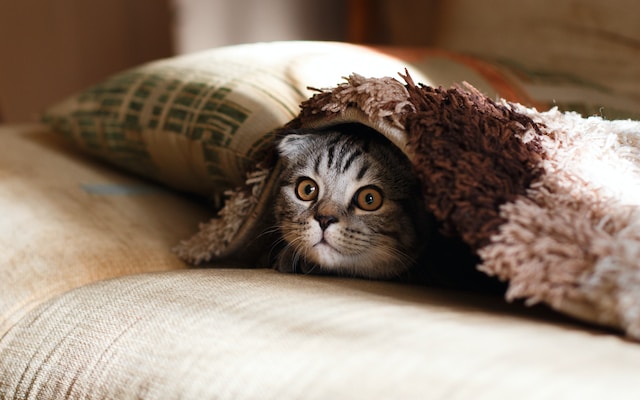
There are several ways that developing a pet-friendly interior design can affect your home insurance policy. By being proactive, you can prevent various pet-related incidents that could impact your insurance coverage and premium costs.
- The fewer pet incidents you have, the less likely you’ll need to file a claim. When you file a claim with your homeowner’s insurance company, it can cause your annual premiums to increase. If too many claims are filed within a specified period, your insurance company may also choose to cancel your policy, and finding new coverage can be difficult.
- Certain dog breeds may be considered high risk to insurance companies. If you own a “high-risk” dog, ensure adequate liability coverage.
- Choosing durable, pet-resistant furniture and flooring can help protect your investment and reduce damage. Most home insurance policies won’t cover damage related to pets, so it’s important to make sure that you do your part to protect the components and items in your home.
- When you maintain a good balance between having a pet-friendly home and an adequate level of home insurance coverage, you can rest easy knowing that you’re covered if something goes wrong.
Creating a harmonious and safe living space for your pets, yourself, and your family is a great way to enjoy your home while supporting the health and safety of everyone. Taking these steps in advance will also ensure that you’re getting the correct type of insurance coverage you need if something were to go wrong. As you remember these pet-friendly interior design tips, take proactive steps to safeguard your home and your pets while considering your insurance policy so that you’re protecting your hard-earned investment.
